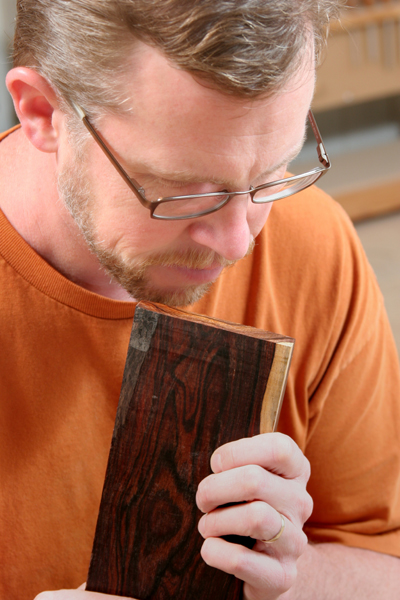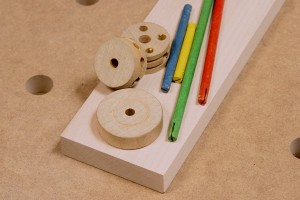 I can’t smell the roses anymore…and I don’t mean that figuratively.
I can’t smell the roses anymore…and I don’t mean that figuratively.
I’ve literally lost my ability to pick up their aroma, for some reason. My wife likes to tease me about it, especially since I find that loss a bit alarming. But, thank goodness I can still smell wood.
Hopefully, that doesn’t sound too weird in the company of woodworkers, but I really do like the odor of most woods. I’ve been known to do a “scratch and sniff” test to wood right on the rack at the lumber dealer, so I’m not afraid to do it—even in public. Especially if it’s a wood I haven’t worked with before. It’s all part of the fun of woodworking for me.
Here are just a few of my olfactory favorites, and I’d like to hear about yours, too. That’ll give me good reason to head to the lumber store sometime soon and sniff out something new (as if I needed another reason to go…).
Port Orford cedar: A few years ago, I had the good fortune to build a writing desk from this increasingly rare wood from the Pacific Northwest. It was some sweet reclaimed lumber from Northwest Hardwoods. I had never worked with the stuff before, but I was in for a real treat. Port Orford cedar has a menthol-like odor to it; sort of a cross between eucalyptus and camphor. Some might equate that fragrance with bad childhood memories of Vicks VapoRub and bronchitis, but it has a pleasant, clean smell to me. The lumber was a joy to work with. Creamy in color, it cuts and routs like butter and takes on a surprisingly deep radiance when you finish it. Sort of like a spruce guitar. If your blade singes it during a cut, the shop will fill up with the smell, and it’s really powerful. I left the inside of the drawers unfinished, so the memories of building that project stay with me every time I open them. It’s a nice reminder.
Ebony: When I was a young kid in the ‘70s, I had a necklace with a cross pendant on it that I would wear to church. Evidently, that sort of bling was in vogue then… My dad was a pastor, and he gave it to me as a gift. It was jet-black and had smoky smell to it. I didn’t know what the wood was then, but I do now, thanks to that distinctive color and smell. Ebony will make you think of a good campfire or some sort of good-tasting meat jerky when you cut it. You won’t forget it.
Pine: The smell of fresh-cut pine takes me right back to third-grade Cub Scouts and the pinewood derby races. My car didn’t win, and it sure wasn’t much to look at, but it was my first real experience working with pine. Some woods like maple or cherry don’t really give up much aroma to a wood snorter like me, but pine does. I bet pine brings back memories of your early days as a woodworker, too. Soft, forgiving and relatively cheap, pine has got to be the perfect starter wood for a kid. I should really stock up on some pine and build something from it again soon. Maybe another derby car that actually rolls the right way this time…
Cocobolo: This oily exotic has a distinctively spicy, almost peppery smell to it. Cocobolo is really expensive, but the wood grain is so darn beautiful you just have to try it someday. Especially for turnings. If the grain alone doesn’t blow you away, your nose will tell you that you’ve working with a species that should be savored.
Birch: Did you play with Tinker Toys as a kid? That’s probably where my woodworking interests got started. Birch is Tinker Toy wood, no question. Cut a piece of it, and you’ll know exactly what I’m talking about. I can still hear those colorful sticks and pucks of birch plunking back into the Tinker Toy can.
Cedar: Western red cedar is always a treat for me to work with. Its pungent aroma pumps me up for some sort of springtime exterior project—Adirondack chairs, a new picnic table, maybe a planter. A couple springs ago, my daughters and I built a half dozen bluebird houses to put up around the yard. Now, cedar makes me think of woodworking with my kids. That’s a pleasant new memory from an old favorite.
If you’re a wood sniffer too, raise your snoot! I salute you!
Catch you in the shop,
Chris Marshall, Field Editor





